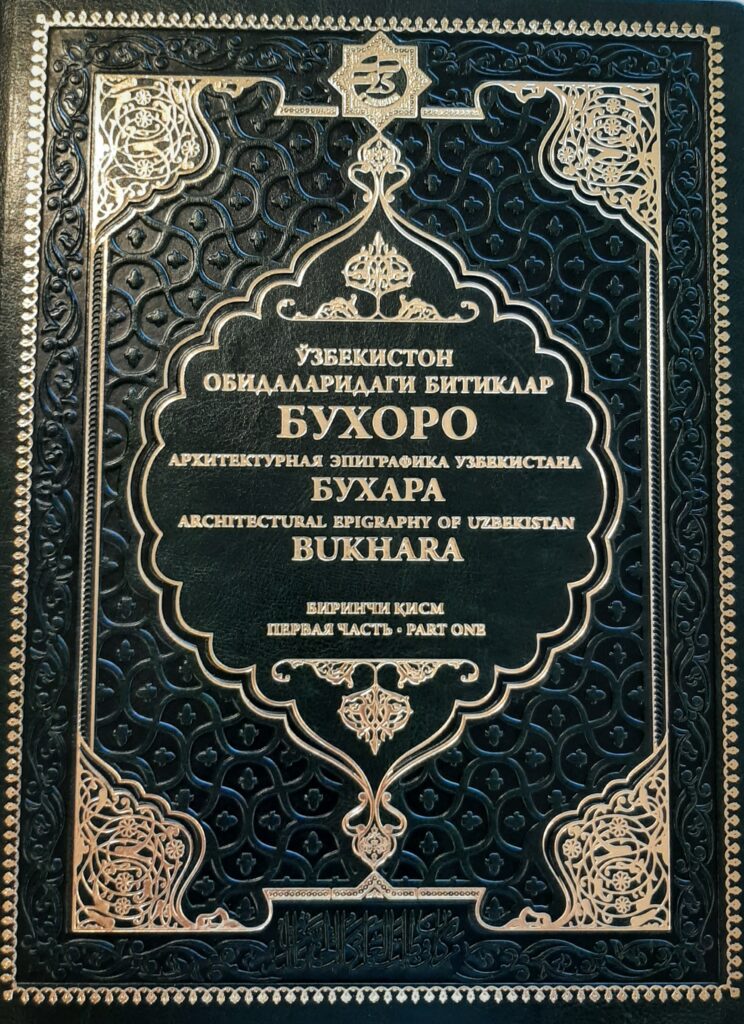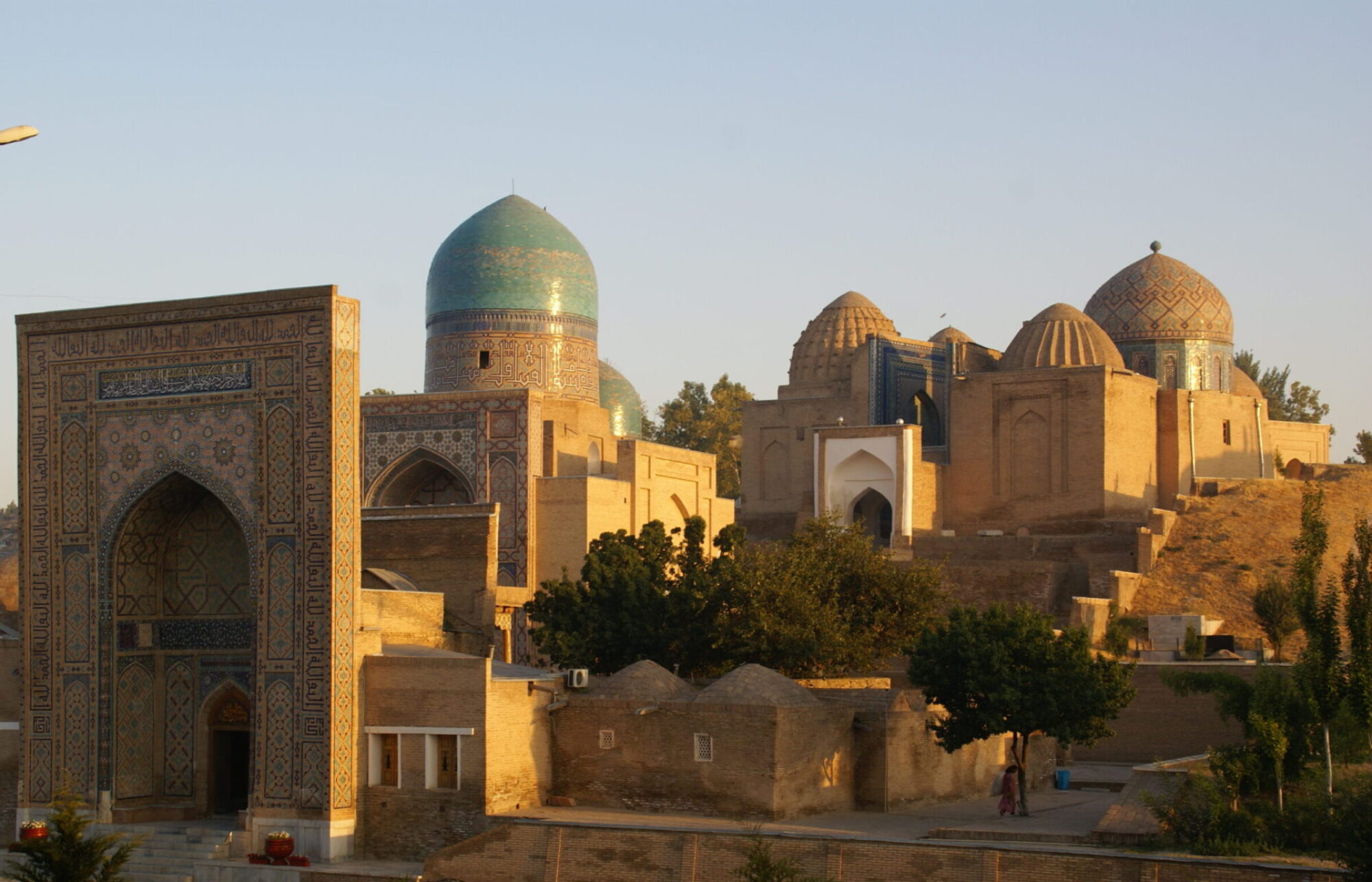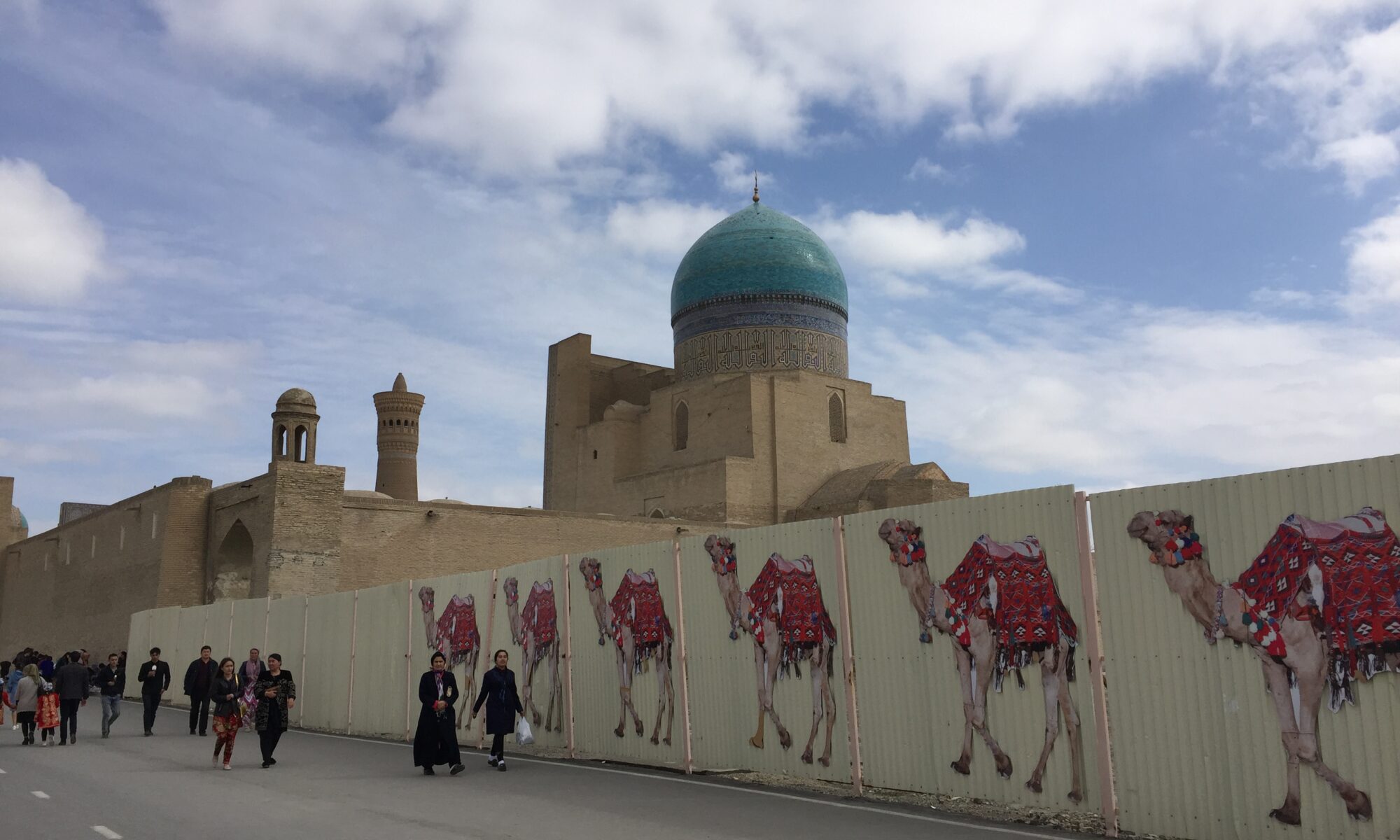Text taken from: Silk Road Cities. Documented through photographs, prints and postcards.
One of the major cities along the Silk Roads, Bukhara has long been a centre of religion and trade. The first archaeological evidence of urban settlements along the Oxus and expansion towards the oasis of Bukhara date back to the Kushan Empire (30-375). The city became the centre of the oasis sometime around the 5th century. The inhabitants of Bukhara were primarily traders, as well as landlords and peasants. Trade with China was a very important source of wealth for them. Because of its favourable geographical location, agricultural richness and trading potential, the city attracted Indian and Jewish merchants. After the Arab conquest and the advent of Islam in the 7th century, Bukhara gradually emerged as a great centre of Islamic learning across Central Asia. The Arab tribal warriors were settled in the city quarters and mingled with the local multi-ethnic and multi-religious population, who converted to Islam sooner than elsewhere in Central Asia. The first mosque was built in the citadel in 712, on the site of a former Buddhist and later Zoroastrian temple. Bukhara was also in the centre of the Sogdian trading routes that stretched from China to Byzantium. The Sogdian merchants brought prosperity to the Bukhara oasis.
The ‘Golden Age’ of Bukhara was as capital of the Samanid Empire (819-1005) when it was rivalled only with Baghdad. The city attracted Islamic scholars, poets and artisans, and became the cultural centre both for Arabic learning and for New Persian literature under the patronage of the Samanid amirs. As the trade expanded and Bukhara became a populous metropolis, craft guilds developed and certain quarters became known for the bazaars and residences of various craftsmen. The Mongol conquest of 1220 interrupted this rapid economic and cultural development. In 1370 the city was captured by Timur. Under the Timurids, Bukhara had a secondary role compared to Samarqand. However, major Timurid monuments were built that still define the main urban axes of the city. After the Uzbek dynasty of the Shaybanids (1500-1598) defeated the Timurids, Muhammad Shaybani Khan (d. 1510) established the Khanate of Bukhara and the city became its capital after 1533.
The second climax of economic and political prosperity took place in the second half of the 16th century and in the 17th century, when the influential Juybar shaykhs bought villages and large plots of arable land around the city. In particular, they expanded their building activity to the west of the shahristan (the town proper). In the second half of the 18th century the non-Chinggisid Manghit dynasty (1753–1920) took over the khanate which became known as the Emirate of Bukhara. The last amir of Bukhara Muhammad Alim Khan was ousted by the Russian Red Army in September 1920 and fled to Afghanistan.
During the Soviet period, the Islamic architectural monuments were rebuilt throughout numerous restorations campaigns led by Russian archaeologists and architects. Bukhara was transformed into a ‘museum in the open’ and celebrated as an architectural oasis along the Silk Roads. Recent regeneration initiatives in the name of tourism have completely changed the urban scape of the city and have had a detrimental effect on its unique architectural fabric.
Photo: Bukhara. 2013. CC-BY-SA 4.0 Elena Paskaleva.
Major monuments in the city are:
Sources for Bukhara
Archnet: Abdul Aziz Khan Madrasa, Bukhara Ark, Bukhara Bazaar, Char Bakr, Kalan minaret, Samanid Mausoleum, Ulugh Beg Madrasa
MIT Dome: photos of Bukhara

General Historical pictures not sorted to monument.



